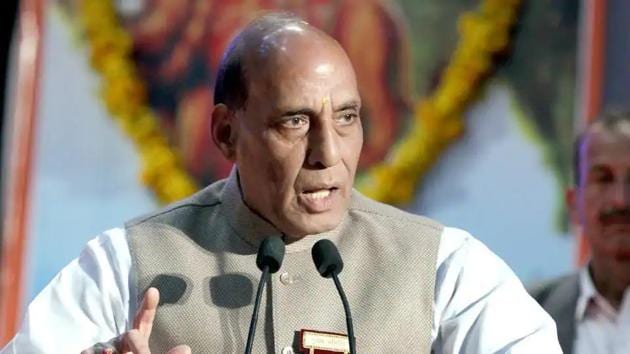India released a new list on Sunday of 780 parts and subsystems that will not be allowed to be brought into the country between December 2023 and December 2028. These parts are used in fighter planes, trainer planes, helicopters, submarines, and tanks.
The defence ministry said in a statement that defence minister Rajnath Singh approved the latest list to cut down on imports by defence public sector undertakings and reach “self-reliance” in the defence manufacturing sector.
This is the third list of “important line replacement units (LRUs), subsystems, and components” that are not allowed to be brought into the country. It comes after the government put out two similar lists in December 2021 and March 2022.
“These lists have 2,500 items that have already been “indigenized,” and they also have 458 items that will be “indigenized” by the dates given. “So far, 167 out of 458 items have been made by the country itself,” the defence ministry said.
It said that making these subsystems and parts in India will help the economy, make DPSUs less dependent on imports, use the design skills of the domestic defence industry, and make India a leader in these technologies.
Some of the parts and subsystems that would be made locally are parts for Sukhoi-30 and Jaguar fighters, light combat aircraft, and Dornier-228 planes, as well as parts for submarines, T-90 and Arjun tanks, and light combat aircraft.
India has published three other lists that ban the import of 310 different types of weapons and platforms. These include lightweight tanks, naval utility helicopters, artillery guns, missiles, destroyers, ship-borne cruise missiles, light combat aircraft, light transport aircraft, long-range land-attack cruise missiles, basic trainer aircraft, and multi-barrel rocket launchers.
The defence ministry released the latest list at a time when the international backlash against Russia over its invasion of Ukraine has raised questions about the future of new projects with that country, the purchase of spare parts for existing weapons made in Russia, and the maintenance and servicing of legacy equipment used by the three services.
The first list, which was released in March, included parts that India buys from Russia for T-90 and T-72 tanks, BMP-II infantry combat vehicles, warships and submarines, and anti-tank missiles.
The majority of India’s military equipment comes from Russia. This includes fighter jets, transport planes, helicopters, warships, submarines, tanks, infantry combat vehicles, multi-rocket systems, rifles, and even shoulder-fired missiles.
In the past few years, the government has taken a number of steps to make the country more self-sufficient. These include increasing foreign direct investment (FDI) in defence manufacturing, making a separate budget for buying military hardware made in the country, and putting out lists of weapons, equipment, and sub-systems that can’t be brought in.
Former Director General of Military Operations Lieutenant General Vinod Bhatia (ret.) said that India is making planned, steady, and focused progress toward Aatmanirbharta in the defence sector. He also said that several projects have been approved for the local industry.
